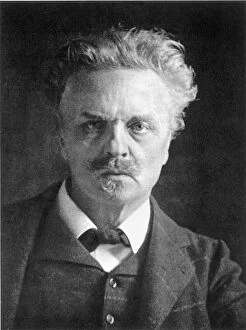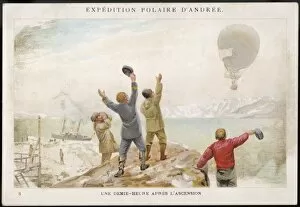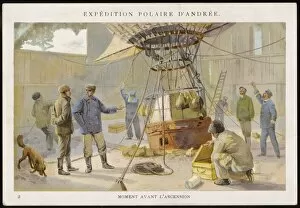Strindberg Collection (#2)
August Strindberg, a renowned Swedish playwright and artist, left an indelible mark on the world of literature and art
For sale as Licensed Images
Choose your image, Select your licence and Download the media
August Strindberg, a renowned Swedish playwright and artist, left an indelible mark on the world of literature and art. His works encompassed various mediums, from storm landscapes to coastal vistas. In his painting "Storm Landscape" created in 1894, Strindberg masterfully captured the raw power and intensity of nature's fury. The turbulent brushstrokes mirrored his own tumultuous life, marked by personal struggles and inner conflicts. In "Coastal Landscape, " painted in 1903 with oil on canvas, Strindberg showcased his ability to evoke a sense of tranquility amidst the crashing waves. The serene scene transported viewers to a place where they could momentarily escape their worries. Strindberg's self-portrait from 1885 revealed a glimpse into the artist's soul. With bold strokes and intense gaze, he bared his emotions onto the canvas. Similarly, in "Little Water, Dalaro" (1892), he depicted a tranquil lakeside view using oil on cardboard—a testament to his versatility as an artist. "The Town, " another one of Strindberg's captivating creations done with oil on canvas, portrayed urban life through vibrant colors and intricate details. It reflected his fascination with capturing everyday scenes that often go unnoticed. Not only did Strindberg excel in visual arts but also had connections with other notable artists like Edvard Munch who painted him in 1892. This portrait highlighted their artistic camaraderie while showcasing Munch's distinct style. Furthermore, Herman Hamnqvist immortalized Strindberg through portraiture—an homage to their friendship that spanned across years filled with creative exchange and inspiration. Straying away from paintings for a moment; photographs documenting Andrees Arctic balloon expeditions caught Strindberg’s attention during this time period—particularly those taken after the crash in 1897 which were later published as historical records in 1932 by unknown creators. This fascination with exploration and adventure mirrored Strindberg's own restless spirit.









